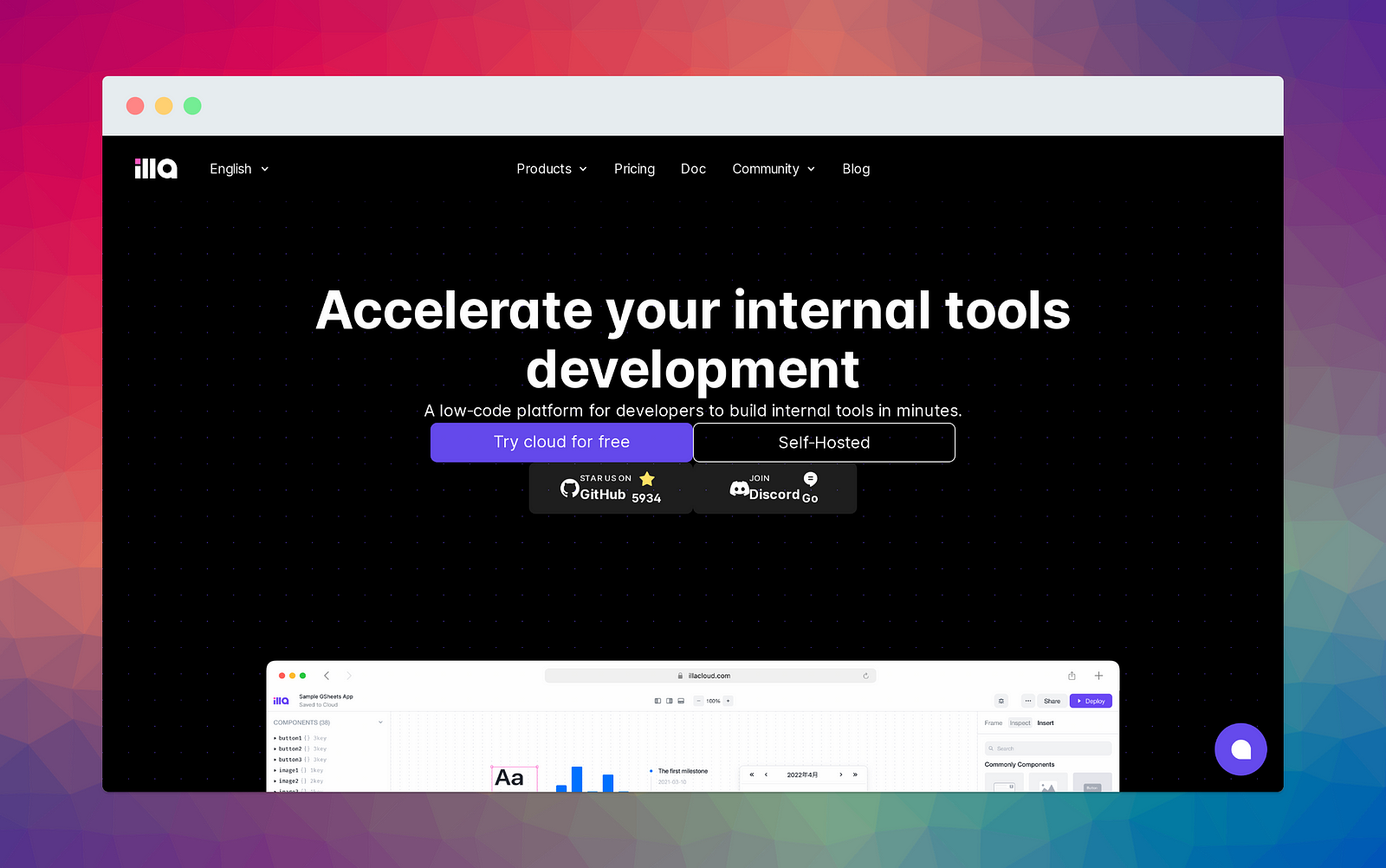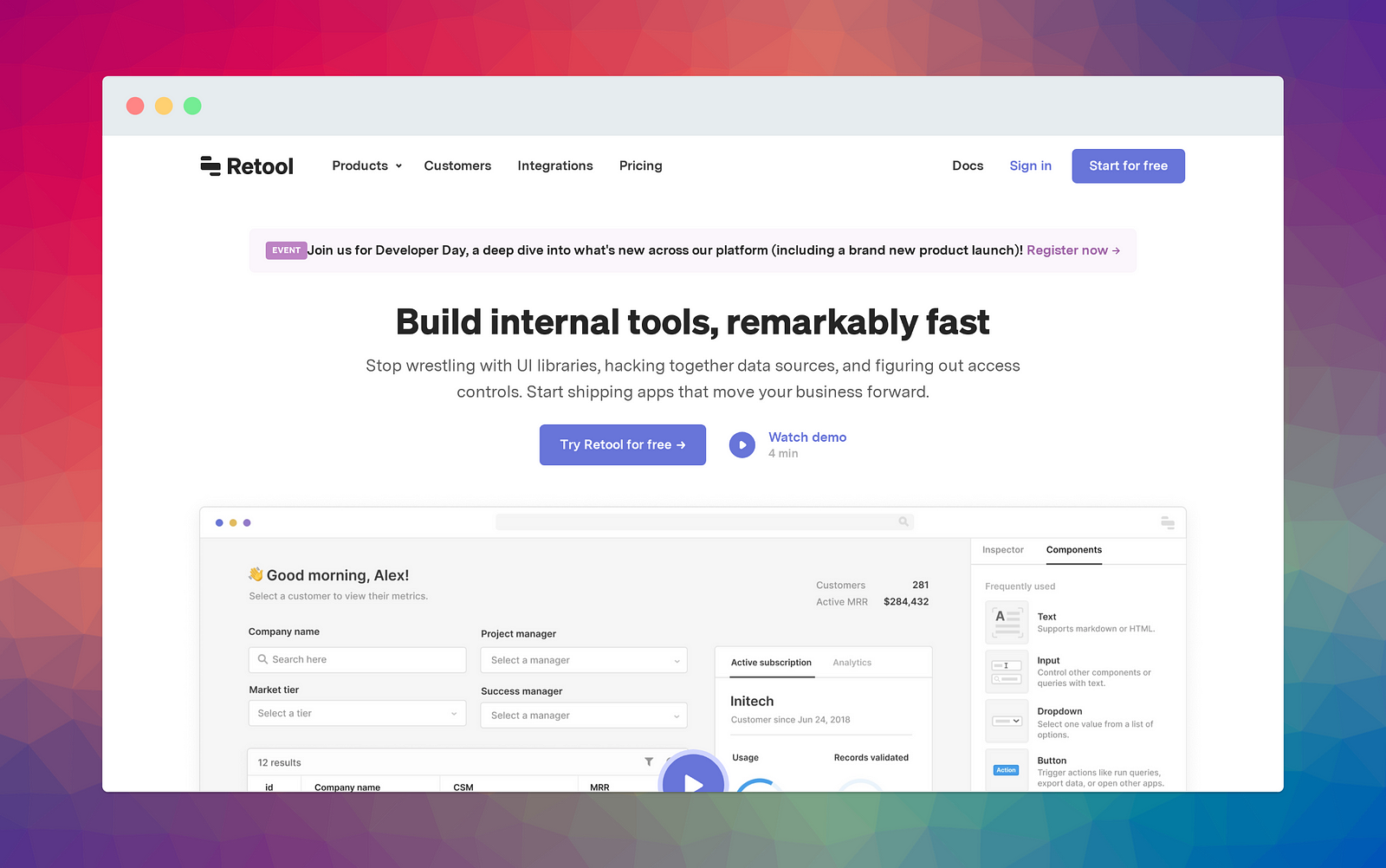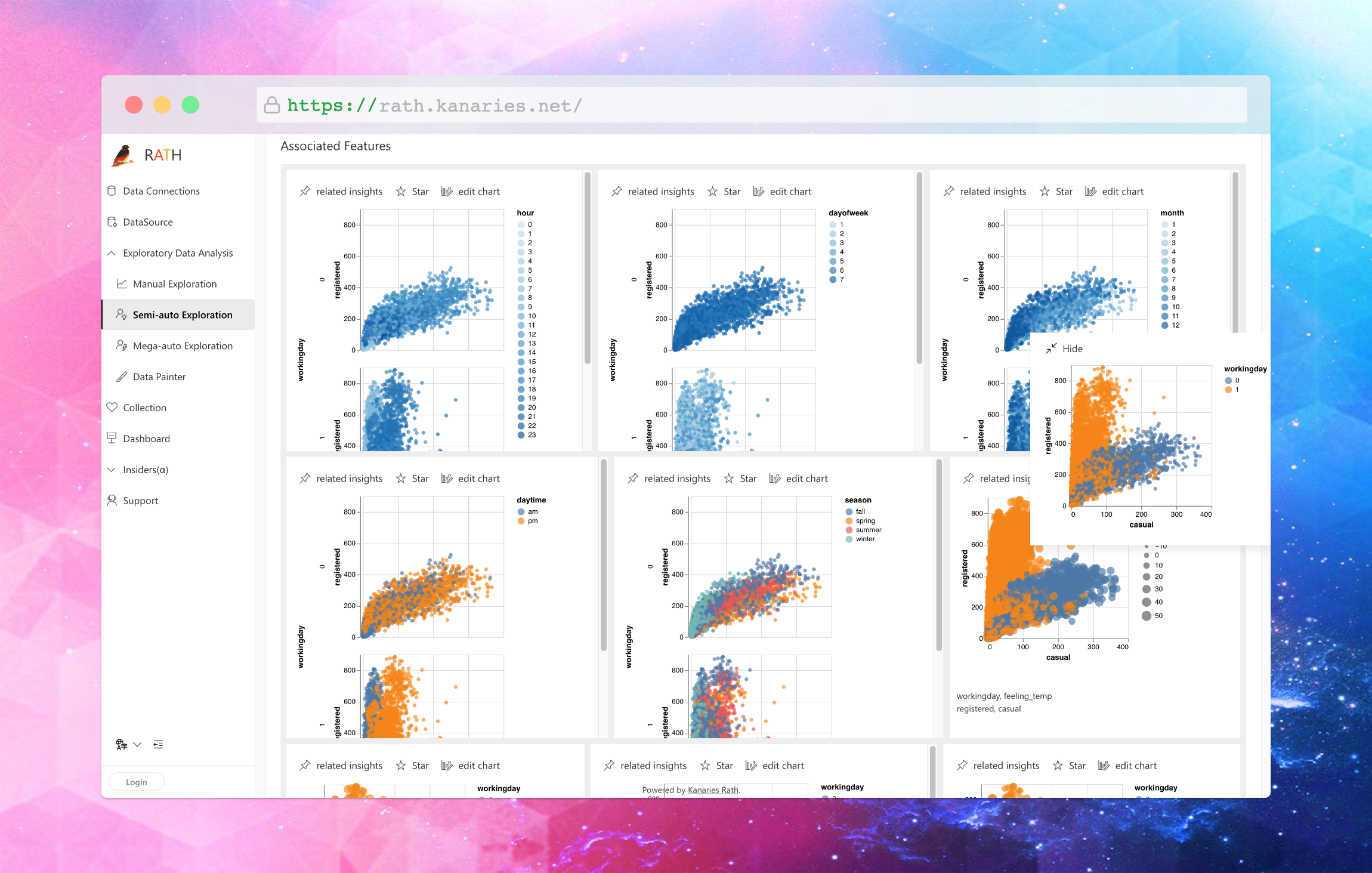IllaCloud vs Retool: A Comprehensive Comparison of Low-Code Platforms
Updated on

The low-code movement has revolutionized the world of software development, offering accessible and efficient tools for creating applications. In this article, we’ll compare two popular low-code platforms, ILLA and Retool, to help you determine which one is the right fit for your needs. We’ll also mention RATH, a powerful data analysis and visualization tool that can complement either platform.
Illa Cloud: Open Source Low-Code Platform
ILLA (opens in a new tab) is an open-source low-code platform designed for developers to accelerate the development of internal tools. Its key features include SQL Generate, integration with various data sources, real-time collaboration, and a fully responsive UI library.
Pros of ILLA
- Open-Source: ILLA’s open-source nature allows developers to access, modify, and contribute to the source code, fostering collaboration and innovation.
- SQL Generate: This feature enables developers to input natural language and receive SQL statements that can be executed directly on databases like MySQL, PostgreSQL, and Supabase.
- Real-Time Collaboration: ILLA Builder facilitates simultaneous work among developers, allowing them to share links, co-edit, and communicate in real-time, improving development efficiency.
- Responsive UI Library: With dozens of components available in ILLA Builder, developers can create tailored internal tools by dragging and dropping components.
Cons of ILLA
- Limited Community Support: As a relatively new platform, ILLA’s community support may not be as extensive as other more established platforms.
- Less Suitable for Non-Developers: ILLA focuses on catering to developers, which might make it less accessible for non-developers or those with minimal coding experience.
Retool: Low-Code Platform for Developers
Retool (opens in a new tab) is a low-code platform that allows developers to build internal tools quickly. It boasts a wide range of pre-built components, integrations with various data sources, and customization options to meet specific requirements.
Pros of Retool
- Extensive Component Library: Retool offers a rich set of pre-built components, including tables, forms, and charts, which developers can use to create customized tools.
- Powerful Integrations: With over 100 pre-built integrations, Retool allows developers to connect with databases, APIs, and other tools to streamline workflows and manage data.
- Customization: Retool provides the ability to write custom JavaScript, SQL, or API calls, giving developers more control over the functionality of their internal tools.
- Security and Compliance: Retool offers features such as audit logs, single sign-on (SSO), and role-based access control to ensure data security and compliance.
Cons of Retool
- Pricing: Unlike ILLA, Retool is not open-source, and its pricing model may not be suitable for smaller teams or organizations with limited budgets.
- Limited Real-Time Collaboration: Retool does not provide real-time collaboration features, which might slow down development and hinder team communication.
ILLA vs Retool: Which One Shall I Choose?
Choosing between ILLA and Retool depends on your specific requirements, budget, and development expertise.
- ILLA: Open-source nature, real-time collaboration features, and responsive UI library make it an excellent choice for developers seeking a collaborative, low-cost solution.
- Retool: Extensive component library, powerful integrations, and focus on security and compliance make it an ideal choice for organizations that prioritize customization and data safety.
Regardless of your choice, a powerful AI Automation Tool for Data Analysis and Data Visualization can complement and enhance your workflow. We recommend RATH (opens in a new tab), an Open Source AI Copilot to push the boundary of Low-Code Automation Workflow further into data analytics realm,
RATH (opens in a new tab) functions as the AI Copilot to enhance the Data Analytics workflow. RATH Copilot (opens in a new tab) can Automate your Data Analytics workflow with Smart Insights and multi-dimensional Data Visualizations generated with the Augmented Analytics Engine. With RATH, you can effortlessly obtain valuable insights from your data, making it a game-changer for data-driven organizations.
To learn more about RATH Copilot (opens in a new tab), visit their GitHub page (opens in a new tab) and join their Discord community (opens in a new tab).
Conclusion
When deciding between ILLA and Retool, consider your specific needs, resources, and development expertise. Both platforms offer unique advantages, with ILLA’s open-source nature and collaboration features contrasting Retool’s extensive integrations and security measures. In the end, you should form your decision on the particular need of your organization in choosing the correct Low-Code platform.
FAQ
1. What is a low-code platform?
A low-code platform is a software development approach that allows users to create applications quickly and efficiently with minimal coding.
2. What are the advantages of using a low-code platform?
The advantages of using a low-code platform include faster application development, reduced development costs, and greater collaboration between developers and non-developers.
3. What is RATH and how does it complement low-code platforms?
RATH is a powerful data analysis and visualization tool that can complement low-code platforms by enhancing the data analytics workflow. It functions as an AI copilot to automate data analytics workflows with smart insights and multi-dimensional data visualizations.
4. What are the differences between ILLA and Retool?
The main differences between ILLA and Retool lie in their open-source nature, real-time collaboration features, component library, integrations, and pricing models.
5. Which low-code platform should I choose for my company?
Choosing between ILLA and Retool depends on your specific requirements, budget, and development expertise. ILLA is an excellent choice for developers seeking a collaborative, low-cost solution, while Retool is ideal for organizations that prioritize customization and data safety.


